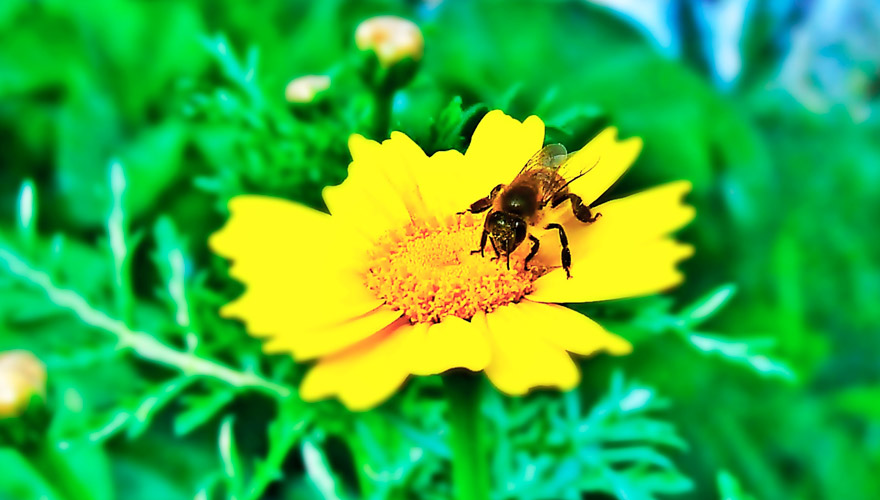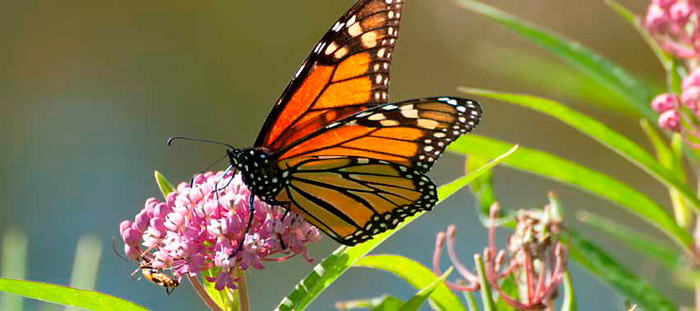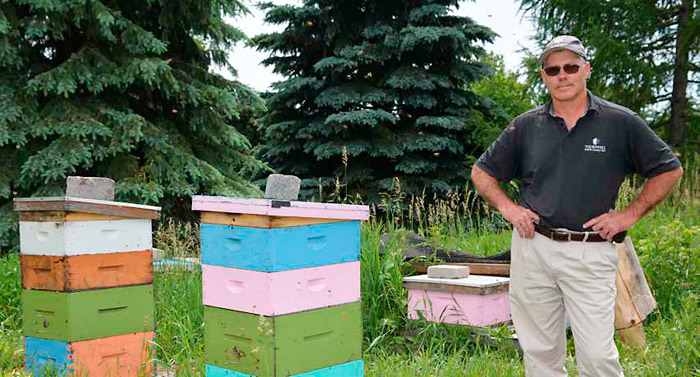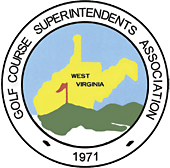Pollinator Protection

Most flowering plants need pollination to reproduce and grow fruit. While some plants are pollinated by wind, many require assistance from insects and other animals. In the absence of pollinators, many plant species, including the fruits and vegetables we eat, would fail to survive.
The western honey bee (Apis mellifera) is one of the most important pollinators in the United States. Hundreds of other bee species, including the bumble bee (Bombus spp.), also serve as important pollinator species. Protecting bees and other pollinators is important to the sustainability of agriculture.
Pesticides are products designed to control pests (for example, insects, diseases, weeds, nematodes, etc.). Pesticides and other plant growth products, including plant growth regulators, surfactants, biostimulants, etc., are used in golf course management. The non-target effect of products used in golf course management is of increasing concern; therefore, pesticide applicators, including those on golf courses, need to be mindful of the impact that pesticides have on pollinator species and their habitat.
Regulatory Considerations
Principles
- Pollinator-protection language is a label requirement found on pesticide labels; follow the label, it is the law.
- Pesticide applicators must be aware of honey bee toxicity groups and able to understand precautionary statements.
- Recordkeeping may be required by law in order to use some products. IPM principles suggest that you keep records of all pest control activity so that you may refer to information on past infestations or other problems to select the best course of action in the future.
Best Management Practices
- Proper records of all pesticide applications should be kept according to local, state, or federal requirements.
- Use records to establish proof of use and follow-up investigation of standard protocols regarding:
- Date and time of application
- Name of applicator
- Person directing or authorizing the application
- Weather conditions at the time of application
- Target pest
- Pesticide used (trade name, active ingredient, amount of formulation, amount of water)
- Adjuvant/surfactant and amount applied, if used
- Area treated (acres or square feet) and location
- Total amount of pesticide used
- Application equipment
- Additional remarks, such as the severity of the infestation or life stage of the pest
- Follow-up to check the effectiveness of the application
- Those applying pesticides, and who make decisions regarding their applications should be able to interpret pollinator protection label statements.
- Those applying pesticides should be aware of honey bee biology.
- Those applying pesticides should understand the various routes of exposure (outside the hive and inside the hive).
- Those applying pesticides should understand the effects of pesticides on bees.

Pollinator Habitat Protection
Principles
- It is important to minimize the impacts of pesticides on bees and beneficial arthropods. Pesticide applicators must use appropriate tools to help manage pests while safeguarding pollinators, the environment, and humans.
- Be mindful of pollinators; when applying pesticides, focus on minimizing exposure to non-target pollinators in play and non-play course areas.
- Pollinators require a diversity of flowering species to complete their life cycle. Pollinator habitat contains a diversity of wildflower species of different colors and heights, with blossoms throughout the entire growing season
Best Management Practices
- Follow label information directing the application of pesticide when the plant may be in bloom. Avoid applying pesticides during bloom season.
- Stay on target by using coarse-droplet nozzles, and monitoring wind to reduce drift.
- Do not apply pesticides when pollinators are active.
- Before applying a pesticide, scout/inspect the area for both harmful and beneficial insect populations, and use pesticides only when a threshold of damage has been indicated.
- Mow flowering plants (weeds) before insecticide application.
- If flowering weeds are prevalent, control them before applying insecticides.
- Use insecticides that have a lower impact on pollinators.
- Use the latest spray technologies, such as drift-reduction nozzles to prevent off-site (target) translocation of pesticide.
- Avoid applications during unusually low temperatures or when dew is forecast.
- Use granular formulations of pesticides that are known to be less hazardous to bees.
- Consider lures, baits, and pheromones as alternatives to insecticides for pest management.
- Develop new pollinator habitat and/or enhance existing habitat.





